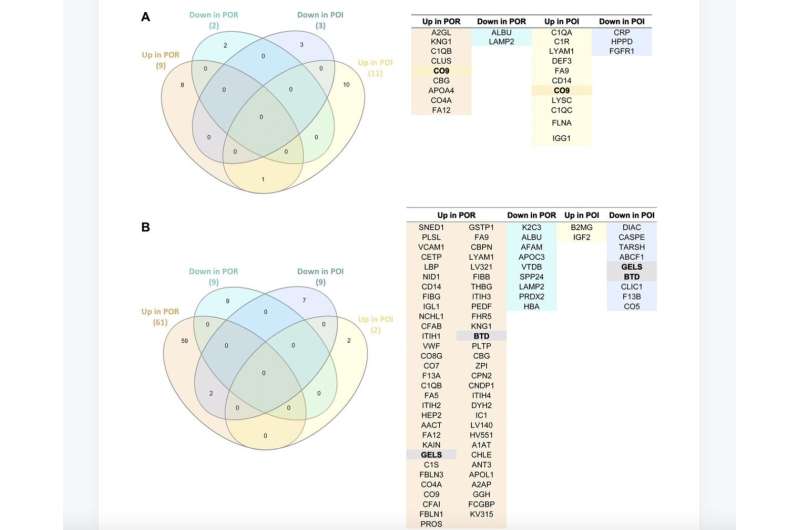This article has been reviewed according to Science X's editorial process and policies. Editors have highlighted the following attributes while ensuring the content's credibility:
fact-checked
proofread
Stem cell ovarian transplant induces changes in plasma proteome of women with impaired ovarian reserves, finds study

A new research paper titled "Systemic changes induced by autologous stem cell ovarian transplant in plasma proteome of women with impaired ovarian reserves" has been published in Aging.
Patients with poor ovarian response (POR) and premature ovarian insufficiency (POI) are challenging to treat, with oocyte donation remaining as the only feasible option to achieve pregnancy in some cases. The Autologous stem cell ovarian transplantation (ASCOT) technique allows follicle development, enabling pregnancies and births of healthy babies in these patients. Previous research suggests that growth factors and cytokines secreted by stem cells are partially responsible for their regenerative properties. Indeed, ASCOT beneficial effects are associated with the presence of different bone marrow derived stem cell- secreted factors in plasma.
In this new study, researchers Anna Buigues, Noelia Ramírez-Martin, Jessica Martínez, Nuria Pellicer, Marcos Meseguer, Antonio Pellicer, and Sonia Herraiz from IVI Foundation—Instituto de Investigación Sanitaria La Fe (IIS La Fe) and IVIRMA Global aimed to assess whether ASCOT induces any modifications in the plasma proteomic profile of patients with impaired ovarian reserves.
"In this study, we aimed to assess if the ASCOT technique modifies the signature of the human plasma proteome, reveal the mechanisms underlying its beneficial effects on the ovary, and identify key regulators of ovarian aging," the researchers write.
Discriminant analysis highlighted clear distinctions between the plasma proteome before (PRE), during stem cell mobilization and collection (APHERESIS) and three months after ASCOT (POST) in patients with POR and POI. Both the stem cell mobilization and ASCOT technique induced statistically significant modifications in the plasma composition, reversing some age-related protein expression changes.
In the POR group, functional analysis revealed an enrichment in processes related to the complement cascade, immune system, and platelet degranulation, while in the POI group, enriched processes were also associated with responses to oxygen-containing compounds and growth hormones, and blood vessel maturation.
"In conclusion, our findings highlight the potential proteins and biological processes that may promote the follicle activation and growth observed after ASCOT," the researchers explain.
More information: Anna Buigues et al, Systemic changes induced by autologous stem cell ovarian transplant in plasma proteome of women with impaired ovarian reserves, Aging (2023). DOI: 10.18632/aging.205400



















